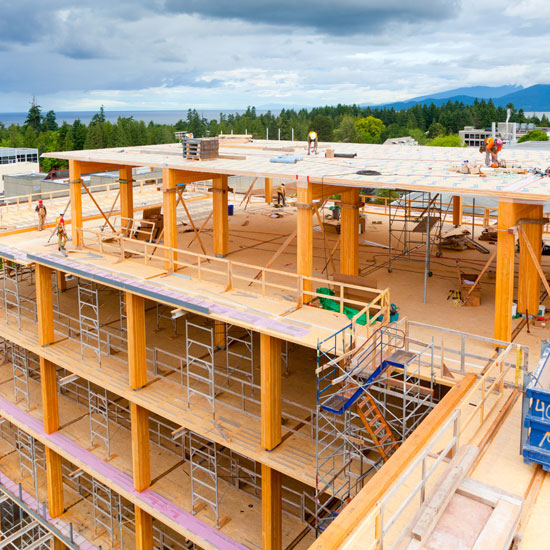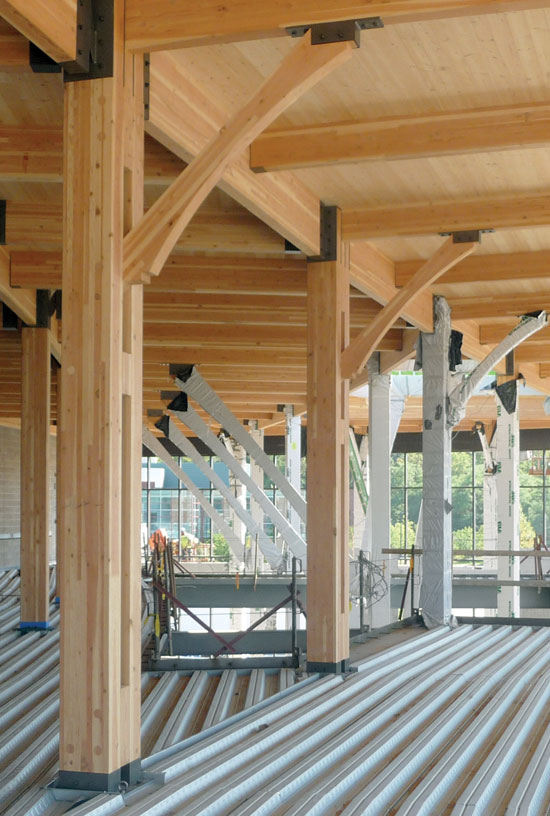Materials In Action
Concrete is one of the strongest materials for compressive strength; tremendous loads can be put on concrete without crushing it. Most concretes can handle 2,000 to 3,000 psi. The American Concrete Institute defines high-strength concrete as having a compressive strength greater than 6,000 psi, but the advent of high-strength concrete has pushed concrete’s compressive strength up to 19,000 psi. Making high-strength concrete involves optimizing the use of basic concrete ingredients. Fly ash and silica fume, commonly used admixtures, provide additional strength, as do superplasticizers which, when combined with a water-reducing retarder, provide workability at low water-cement ratios, resulting in stronger concrete. Most often used in high-rise structures, high-strength concrete is specified where reduced weight is important, and because it carries loads more efficiently than conventional concrete, it can reduce the total amount of material needed, lowering overall building costs. On the other hand, high strength concrete may be more expensive than conventional concrete. According to the Portland Cement Association, one of the tallest concrete buildings in the United States is Chicago’s 311 South Wacker Drive, which at 969 feet, uses concrete with compressive strengths up to 12,000 psi.
 |
Earth Systems Science Building, University of British Columbia This five-story building was built using a combination of massive timber systems including cross-laminated timber (CLT), composite laminated strand lumber/concrete floors, and glued laminated timber (glulam) heavy timber braced frames. CLT was used for the roof and exterior canopies. Photo: KK Law, courtesy naturallywood.com |
 |
The Crossroads For Promega, a leading biotechnology firm headquartered in Wisconsin, CLT and glulam met all of the architectural and engineering goals for its new 52,000-square-foot client and staff reception area known as The Crossroads. Architecturally, using CLT for the roof allowed exposed interior surfaces, which enhanced the glulam beam and column superstructure. From an engineering point of view, CLT allowed the team to increase deck spans while still supporting heavy snow loads. Photo: Uihlein/Wilson Architects, Inc. |









